Short Gowns: the Revolutionary T-Tunic
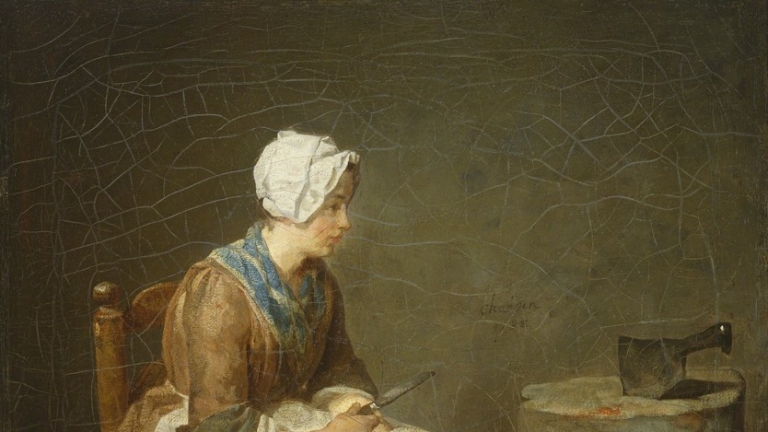
by Cynthia Howell, First published for the July/August 2012 issue of Finery

Puzzling about what to wear to the Revolutionary Picnic? Are you uninspired by the gowns in your closet? Are you looking for an interesting project to use up a few spare yards of fabric? Would you like to be fashionable and functional? Look no further than the short gown.
The 18th century short gown was an invaluable addition to any woman’s wardrobe. The construction is so basic it could be considered the t-tunic of the Revolution. It is also exceedingly comfortable and allows a full range of arm motion. That does not mean that it is frumpy or ugly. This simple garment could be made up in a wide variety of materials. Whether you choose breathe-able linen, a daring changeable silk, or a chic cotton print, you can easily construct a garment that is both flattering and easy to wear. You can probably draft and construct it in a weekend.

Claudia Kidwell studied 28 different short gowns for her paper, “Short Gowns.” Dress. 4. (1978): 30-64, and discovered a wide range of construction details. No matter the variations in detail, the basic cut remained the same. The material was folded over the shoulder line so that a shoulder seam was unnecessary. The front and back were cut as one piece. The front was slit up the center and then the neckline was cut out.
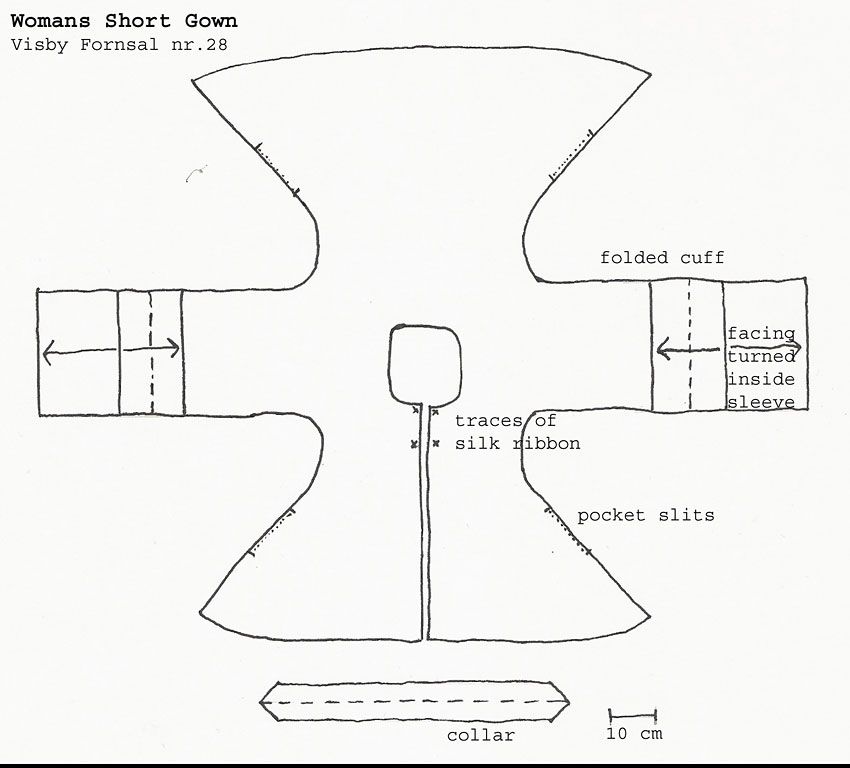
This did not mean the garment was shapeless. Many extant examples use pleats to draw the fabric in at the waist. This creates the typical conical shape and is quite flattering! Sleeves were always pieced to achieve the length desired. Several examples have contrasting sleeve lining, so when the sleeve is turned back the alternate print is visible. Short gowns could be unlined, partially lined, or fully lined. If the gown was unlined the seams would be overcast to prevent fraying. The length of the gown varied from just a few inches below the waist to mid-thigh.
If you would like to make your own short gown, you will need a few basic measurements. These include bust, waist, shoulder to bust, shoulder to waist, bicep and forearm. You will also need to determine the length of the sleeves and the length of the finished gown. For this example, I am using the following measurements; Bust 36, waist 26, shoulder to bust 12, shoulder to waist 20, bicep 13. The sleeves will be 23 inches long and the finished length will be 26 inches.
Start with a sheet a paper twice the length of the finished garment, plus a few inches to spare. Draw a line on the long side of your paper from point A to B that is two times the finished garment length. Draw a line that intersects A-B at the halfway point, label it C to D. The C-D line is your shoulder line. Using your shoulder to waist measurement, draw a dotted line that intersects the A-C line as far down as you need. Label this line E to F. Repeat with the shoulder to bust measurement, label this G to H. Take the half the bicep measurement plus one inch and draw another dotted line, label this I to J.
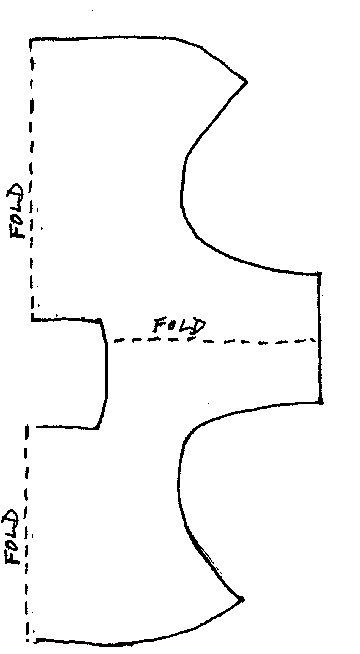
Mark the sleeve length on the C-D line. Draw a parallel line at the sleeve length that ends at the I-J line, label it K – L. Take one quarter of the bust measurement, plus two inches. Mark the G-H line at this point, and label it M. Repeat this on the E-F line, and label it N. Draw a line to connect M to N. Now draw a curving line from M to I and a straight line from I to K. You have just created the sleeve!
Go back to your A mark. Draw a dotted line down from that is about two thirds of the sleeve length. Go up two inches from this line and mark O. Now draw a gentle curve from A to O. Then draw an angled line from O to N. Fold your paper along the C-D line and transfer the O-N-M lines onto it. Mark the neck opening starting two inches past the C-D line on the back and 4-5 inches on the front. You can always cut a larger opening later. Add your preferred seam allowance all around. Now you have the basic shape.
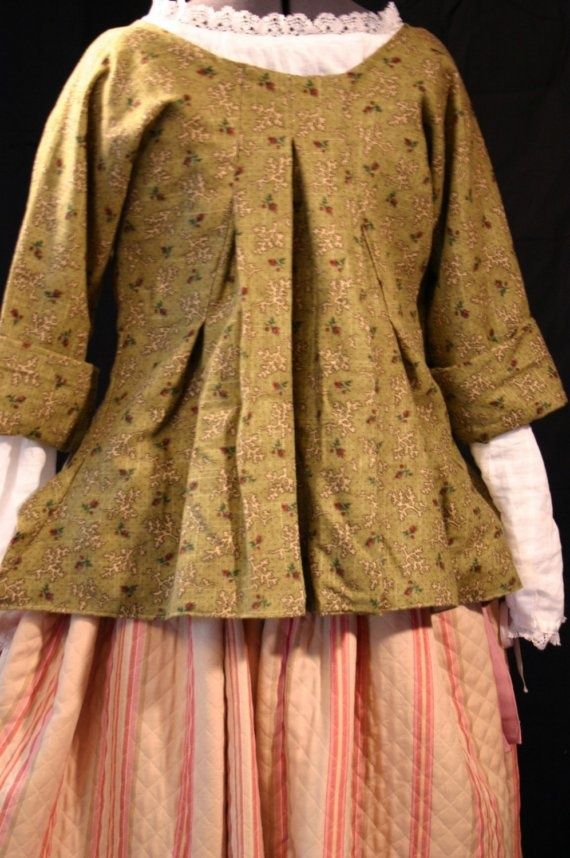
In order to refine the fit, you will need to mark your pleats. The back should have a center back pleat and one pleat on either side. I recommend that the center back pleat be two inches at the waist. The top of the pleat can be narrow or wide depending on what is required to fit your body. You can either draw in the additional pleat or fit it on the body once you have the side seams sewn. Some of the extant short gowns do not have any pleating on the front. I personally think it is more flattering to add a few pleats, it also allows for ease over the front of your petticoat.
Fold your fabric lengthwise and set the A-B line on the fold. I doubt you will need to piece your sleeves. Modern fabrics are much wider than 18th C textiles. If you do need to piece be sure to add some seam allowance so your sleeves do not wind up too short. You should stitch the pieced sections together before moving forward with construction.

Construction is very straight forward. Stitch down the center back pleat and other pleats you have marked. Then stitch the side seams together. Slit the center front of the gown. Check the fit of the gown and adjust any pleats. Turn the neckline, center fronts, and skirts up twice and stitch. Now put on your short gown and preen!
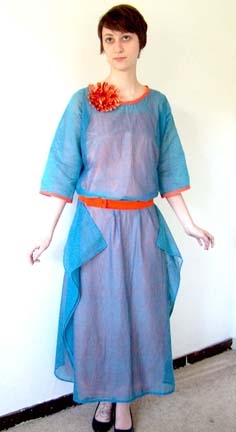
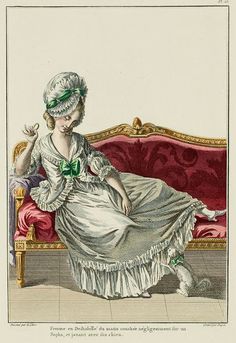
Bonne
It would be nice if the editor of this article had actually marked her pattern with the letters, so we could easily see what her instructions were describing. I would gladly pay for these, if so.
Allyson Szabo
I agree with the previous poster. I need letters on that drawing! Please, because I really want a short gown and I have no idea how to make one. Lol!